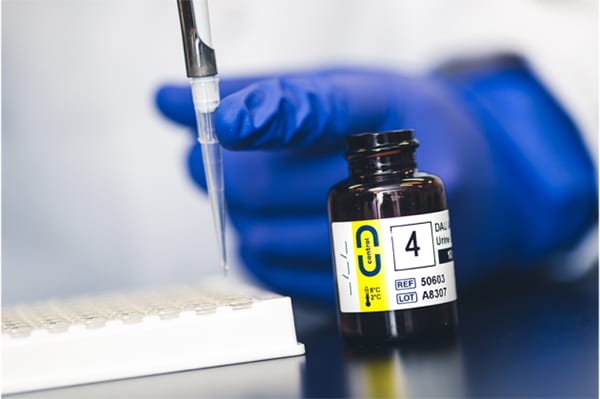
By definition, 3rd party quality control materials are manufactured independently of any reagents and calibrators supplied by an instrument maker. Therefore, 3rd party quality controls have not been designed for use with any specific test method, whether it be mass spectrometry or immunoassay.
The purpose of 3rd party quality controls is very clear – to provide an unbiased assessment of analytical performance across multiple testing platforms.
In addition, and this is very important, if your 3rd party quality controls are made with 100% REAL human matrices that mimic patient specimens, you will safeguard the precision and accuracy of your test results by spotting errors much faster.
Let’s dig in to the 3 major benefits of 3rd party quality controls.
1. Consolidation
Every lab wants to reduce costs, but in the current inflationary environment, reducing costs is even more critical.
Multi-analyte 3rd party quality controls offer the flexibility to reduce the number of quality controls needed across your testing menu. However, these analytes must be spiked in at clinically relevant concentrations to eliminate the need for multiple levels of quality control materials that promote waste, inefficiencies, and human errors.
2. Compliance
CAP, SAMHSA, ASCLD, CLIA, CMS, FDA, ISO, CLSI, etc…you get the picture.
Meeting, and exceeding, the standards required by the regulatory bodies that bolster patient safety and public health is now a part of every testing lab’s operational strategy. That means lab accreditation with these regulatory bodies is mandatory. Peer inspections, audits, and the implementation of best practices are now routine elements of most Quality Control Programs.
Not being able to identify procedural instrument errors, matrix-bias effects, or a shift in test results after changing reagents can threaten accreditation. These risks are often the result of “dependent” quality controls supplied by the instrument maker that use the same starting raw materials to manufacture its reagents and calibrators.
3rd party quality controls, made from 100% REAL human matrices, minimize these risks.
3. Confidence
Failure of quality control testing can result from different types of errors – clerical, technical, methodological, random, systemic, etc. However, nothing will destroy confidence faster than variability or deviation.
In this regard, the integrity of your quality control samples are vital to your lab’s confidence.
What’s in Your Pipet?
Is your quality control material made from 100% REAL human matrices? Is it available in sufficient quantities? Does it have a long shelf life? Is it consistent from lot-to-lot? Does it contain multi-analyte panels at clinically relevant concentrations?
3rd party quality controls should answer yes to all these questions.
The precision and accuracy of your test results depend on it.
UTAK delivers the third party QC you need to take control of your testing. Connect with a Control Freak today to see how we can custom tailor the solutions you need to improve patient care and deliver accurate results.
